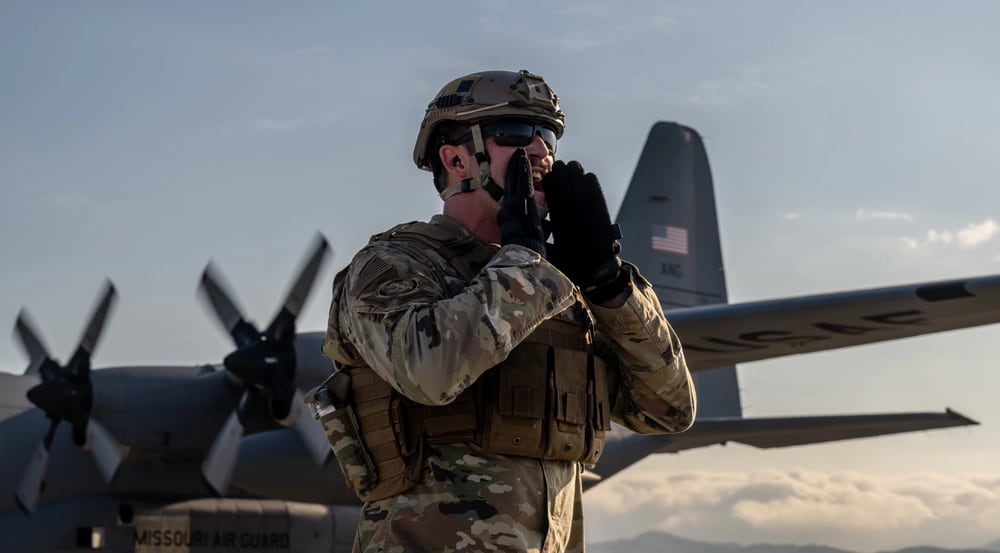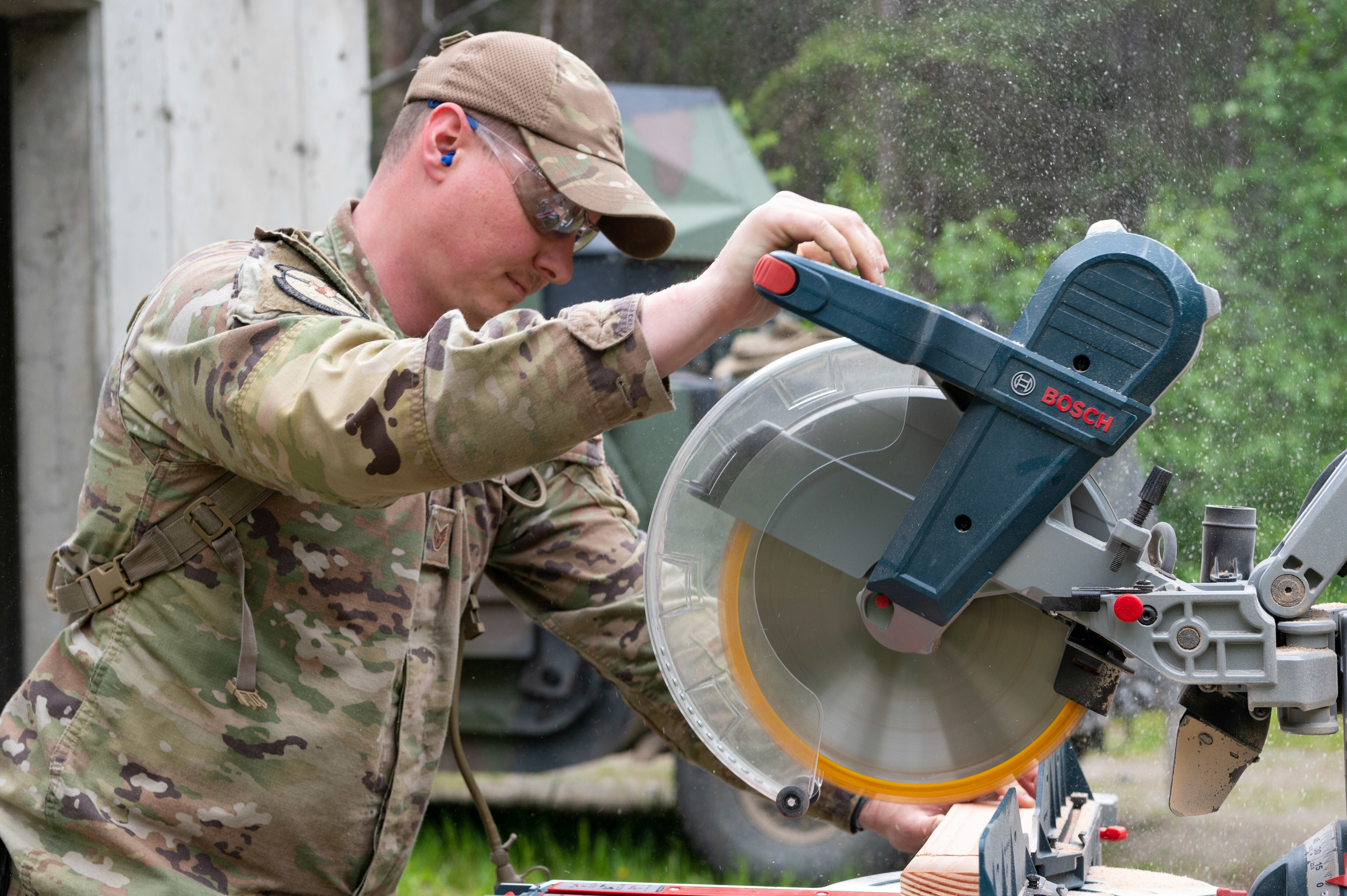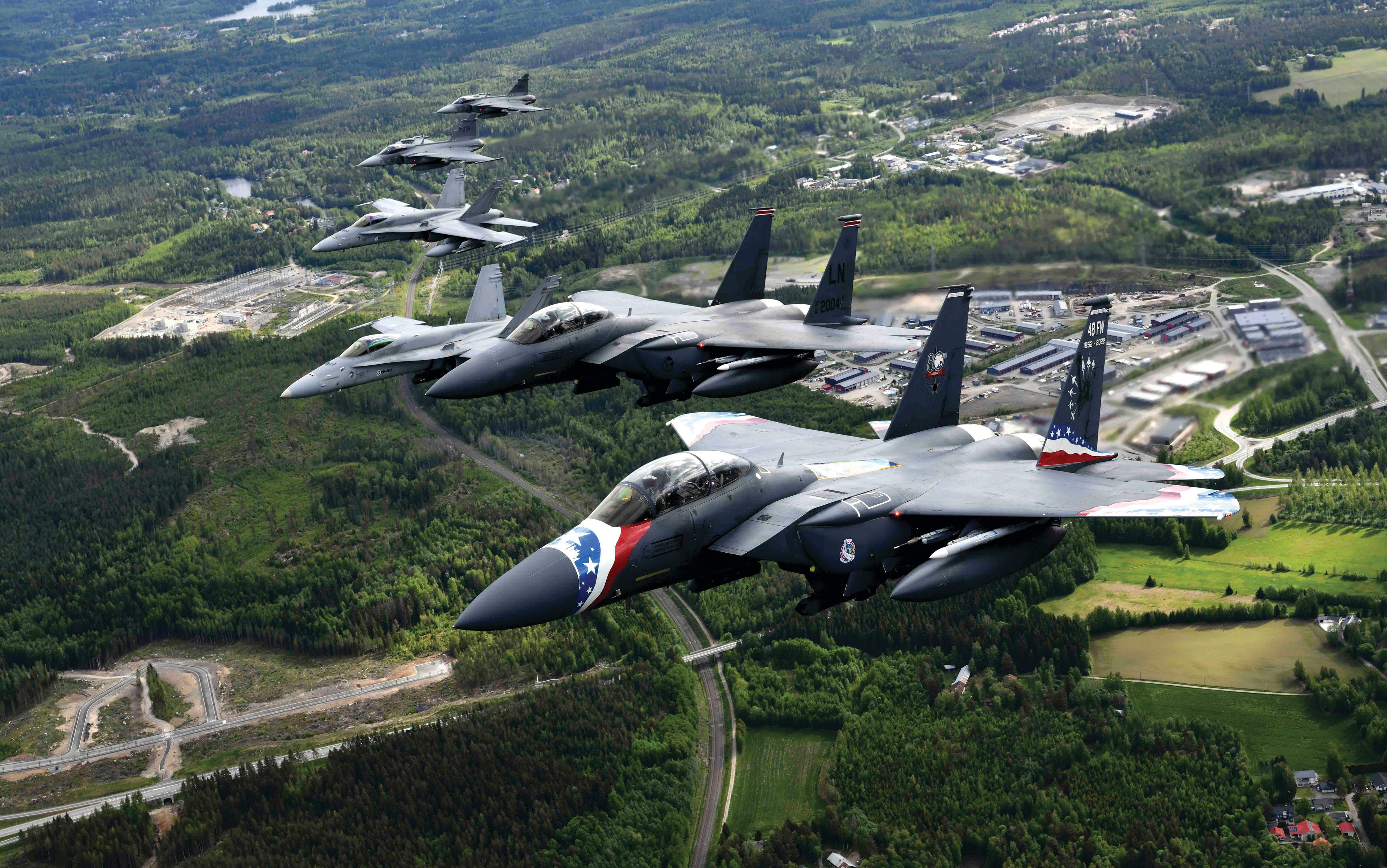Two years ago, in the midst of the U.S. military’s frantic withdrawal from its two-decade war in Afghanistan, the Air Force unveiled a new, sweeping effort to change how it deploys airmen overseas.
The Air Force’s force generation plan, or “AFFORGEN,” aims to lay the foundation for the shrinking service to take on a faster, less predictable era of warfare after more than 20 years in multiple conflicts across the greater Middle East.
RELATED

No longer would airmen be thrown into rotation after rotation, wearing down people and planes and leaving little time for training or home life. Under AFFORGEN, the service wants airmen to spend 18 months in increasingly intensive training before entering a six-month stretch when they can deploy on short notice.
Each step of the four-part program lasts six months, meaning units would ideally go more than a year between deployments. Aircrews and maintainers have already started heading overseas under that model, for taskings such as the NATO air patrols to keep Russian jets from threatening Europe.
“While we are making progress on how we are generating forces, we still need to work on how we present forces to the joint force,” Air Force spokesperson Capt. Rachel Salpietra said in an email. “We also need to work on how we are training forces to work together as task-organized teams.”
Now the service is preparing to introduce a central tenet of the AFFORGEN plan. Starting in October, it will begin dispatching new groups known as “expeditionary air base teams” to replace air expeditionary wings after more than 20 years.
The Air Force has used air expeditionary wings since the 1990s, when they became a way to keep several different air capabilities at one base to quickly react to crises in a region. Staff at those bases were chosen piecemeal from various wings. After they were picked, they’d start to train on the skills they needed to be certified to deploy.
That model served as the Air Force’s main means of projecting power throughout the War on Terror, at installations like Al Udeid Air Base in Qatar.

Cohesive teams
Now service leaders envision sending airmen to existing bases — or to new camps set up on the fly — in teams that are small enough to be flexible and trained in a wide variety of jobs — which the Air Force calls “agile combat employment.”
But instead of bringing together airmen from several wings, the Air Force will send out a group of people from the same base, known as an expeditionary air base team. Each will be composed of engineers and other personnel who can prepare a base for flight operations, the supporting airmen needed to run the base, and leadership — the wing commander, a command chief and wing staff.
Those teams can also pull from units at nearby installations, to improve regional training inside the U.S. before going overseas, the service said in a March video.
Ten different expeditionary air base groups will be available to deploy at any given time, depending on what capabilities regional commanders need. Once a site is established, the Air Force can bring in airmen with other skills as needed.
Its motivation is twofold: to shrink the footprint of existing brick-and-mortar bases that could become targets; and to capitalize on the camaraderie and trust of airmen who have lived and worked together stateside.
It also makes what the Air Force has to offer clearer to the other military branches, when the Joint Staff or a combatant commander is considering what combination of forces to throw at a problem.
“It is sometimes difficult to convey a finite capacity, especially within base operating support,” Maj. Gen. Clark Quinn, deputy commander of Air Forces Central, said at a conference in March. “It’s very easy to go, ‘We have this many fighter squadrons. This many are deployed already. This is how many we need in a reset phase.’ ”
Pieces of the puzzle
Expeditionary air base teams are the next step of the Air Force’s vision for “force elements,” or components that comprise a deployed force.
Those seven components include: airmen who open, establish, operate and grow a base; a leadership “command-and-control” team; a “mission generation” team of pilots, maintainers and other aircrew; and rapid-reaction forces.

“We’re no longer focusing on individual flights, squadrons, groups or wings, but on force elements,” Air Combat Command, which manages most of the service’s deployed aircraft, told Defense Daily in 2021. “Force elements are a composition of multiple [specialties] that [represent] an operational capability and are aligned to the Air Force’s assigned roles and missions.”
Some airmen are optimistic about the changes so far; others say it’s simply a rebranded version of the past that won’t affect their deployments.
“Some fields will still need to support more frequently or have different dwell cycles,” Air Force Reddit user KlaussVonUllr commented. “There are a lot of pros. Big picture, I think it’s a great model.”
“I’m tired of being a reactionary force,” Reddit user b3lkin1n added. “Let us train constantly and be ready. … You are a soldier/Marine before your [job] and they are all trained to fight. Why can’t we?”
Easing the burden
Lt. Gen. John Healy, the head of the Air Force Reserve, noted at a conference in March that more predictability in uniform will lend the Reserve’s part-time airmen more stability at their civilian jobs.
Air National Guard boss Lt. Gen. Michael Loh added that while AFFORGEN may not help the Guard’s around-the-clock operations in their home states, it would ease the burden of overseas ops.
“The uncertainty of deploying that came from the previous model put a lot of stress on the [medical group] to medically clear airmen in time,” said Lt. Col. John Smith, a squadron commander in the 87th Medical Group at Joint Base McGuire-Dix-Lakehurst, New Jersey, in a release. “With AFFORGEN’s deployment cycles, we’re able to plan ahead from a medical standpoint and maintain a ready force.”

Still, airmen in the mobility community have complained on social media that the seemingly never-ending pace of cargo and refueling operations mean they still travel more than they rest.
When asked if AFFORGEN is taking a backseat to real-world demands, Air Mobility Command spokesperson Lindsey Wilkinson said airlift and tanker crews are adopting it like the rest of the force.
But, she noted, those airmen are also beholden to the daily needs of U.S. Transportation Command, as they were before AFFORGEN began.
Like the Air National Guard’s 24/7 operations, that means mobility airmen still have to help ferry the joint force and U.S. leaders around the world — even if they aren’t stationed outside the U.S.
Salpietra acknowledged that means mobility aircrews will have to be “uniquely managed to optimize readiness” while fulfilling TRANSCOM’s mission.
“Short-notice deployments will always be a fact of life in the Air Force,” she said. “AFFORGEN provides us with a tool for selecting those units best able to meet the operational requirements, while communicating the risks associated with doing so.”
Changes in training
AFFORGEN has also spurred the service to revamp airmen’s pre-deployment training. Rather than wait to get called up to get up to speed on skills, from cross-cultural communication to survival tactics, the Air Force is trying to spread that work across 18 months.

The active duty Air Force must adopt the “Ready Airman Training” framework by October 2024, while the Air Force Reserve and Air National Guard have another two years.
How much training an airman has to do depends on how up-to-date they are on those skills. That ranges from 15 hours for people in staff jobs or who are nondeployable, to 40 hours for those deemed inexperienced.
Though the Air Force has tried not to be too prescriptive in how units should check off those training requirements, some airmen are confused about what’s expected of them.
“The vague training requirements are the most annoying, such as the 4-8 small-arms requirements with no set standard on how to accomplish most of them,” Reddit user MisterHEPennyPacker wrote.
Maj. Gen. Albert Miller, the service’s training and readiness director, told Air Force Times last year that a unit could bake lessons in proper handling, sight alignment and clearing barrels into an exercise, or invite an expert to discuss it at a commander’s call.
“It’s little reminders of what they learned when they were at the range [in] the initial training, to keep that level of readiness up over time,” he said.
Some units have begun parlaying those instructions into new learning opportunities.
For example, a group of engineers from California’s Beale AFB recently learned their way around search-and-rescue helicopters in a cursory rotary-wing safety course — information that could come in handy if a deployment requires them to fly on an HH-60.
In another instance, the Air Force Civil Engineer Center tried out a crash course in airfield repair for airmen from other careers.
Tracking progress
Whether AFFORGEN will have a sizable impact on airmen’s well-being and military readiness remains to be seen. The service will start tracking metrics on training, maintenance and more later in the rollout, Salpietra said.

Force Generation hasn’t been in place long enough to know how it affects readiness metrics, like mission-capable rates — the percentage of a fleet that can perform at least one of their core missions, she said.
When the initiative will fully come to fruition remains to be seen. The Air Force first estimated it would be ready for initial operations in 2023; it recently told Congress that deadline would come in 2024. It’s unclear what the service wants to accomplish as part of that milestone.
Salpietra said Air Force leaders would assess AFFORGEN’s progress so far and flesh out future benchmarks at the service’s “Corona” conference of general officers, which was held June 12-15 in Florida.
At Corona and beyond, they’ll try to answer the questions that stand in the way of making AFFORGEN a sustainable reality.
“How do you pull that manpower out of squadrons, to build teams that can train together and deploy together as teams, without an excessive impact to the installation?” Lt. Gen. Jim Slife, the Air Force’s operations director, said in March. “Frankly, that is the central question.”

Filling in for those airmen while they’re away could be a job for the Air Force Reserve.
“I received calls from more than one [major command] saying, ‘Hey, can you help a brother out?’” Healy said. “I think it’ll be clunky going out of the box, but … I see a lot of opportunity there.”
Rachel Cohen is the editor of Air Force Times. She joined the publication as its senior reporter in March 2021. Her work has appeared in the Washington Post, the Frederick News-Post (Md.), Air and Space Forces Magazine, Inside Defense, Inside Health Policy and elsewhere.




